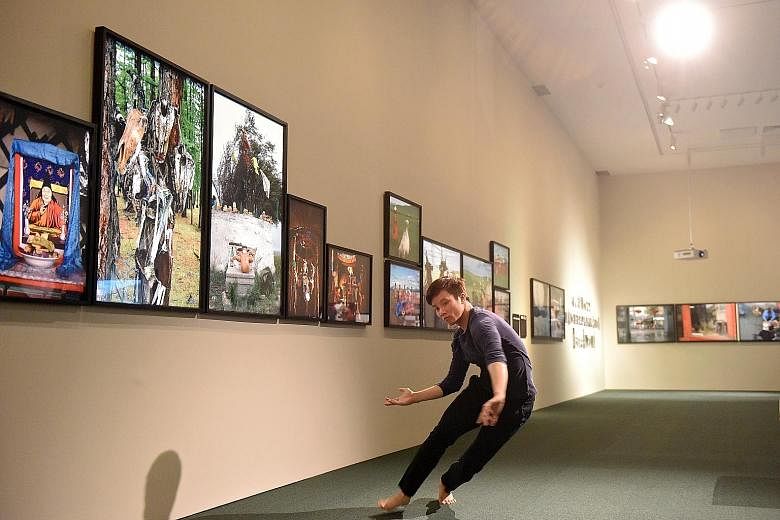The peasant, the shaman and the witch may sound like characters in a fantastical tale.
In the curious case of dance production Shaman/Peasants - Dance Of The Barefoot Guardians, however, they represent rituals and the passing of time.
The 30-minute piece by dance company Arts Fission is a response to the photographs and films of scenes of everyday life in 1980s and 1990s China and Mongolia by German artist Ulrike Ottinger.
It is followed by a casual post- show discussion.
Ottinger's works are being shown in an exhibition titled China. The Arts - The People at the NTU Centre for Contemporary Art Singapore. This is the first large-scale presentation of her work in Asia and comprises more than 100 photographs and four films.
The dance production takes place in the gallery space on Friday and July 28 at 5 and 7.30pm. The exhibition runs until Aug 13.
Angela Liong, Arts Fission's artistic director and choreographer of the work, says that it is "very much influenced by Ottinger's journey in China", at a time during which communist China was opening up and going through economic reform.
-
BOOK IT / SHAMAN/ PEASANTS - DANCE OF THE BAREFOOT GUARDIANS
-
WHERE: NTU Centre for Contemporary Art Singapore, Block 43 Malan Road, Gillman Barracks
WHEN: Friday and July 28, 5 and 7.30pm. Exhibition runs till Aug 13: Tuesdays to Thursdays and weekends, noon to 7pm; Fridays, noon to 9pm
ADMISSION: $15 for Shaman/ Peasants; exhibition is free
INFO: Tickets from www.global tickets.sg; for details, go to www.facebook.com/artsfission.company or www.ntu.ccasingapore.org
"What was interesting was to think about what was untouched throughout this time of political and economic change. And I felt that it was the lives of the nomads, which would still, in certain ways, be the same," says Liong.
"Ottinger's photos of the people in the cities show them trying to hold on to certain routines, such as the women with their thermos, or the way furniture was arranged."
But these will not be reflected in the dance in a literal or ethnologically accurate way.
For example, with the shamans, Liong distils their costume into a mass of long colourful strips of cloth, which obscure the human form.
Another signifier of the time period in which Ottinger's photographs were taken is the "Mao suit", or Chinese tunic shirt - that was favoured by Chinese leader Mao Zedong and popular with men in China - which some of the dancers will wear.
Such an open response to the exhibition, part of the NTU Centre for Contemporary Art Singapore's Stagings series, is the point of the collaboration. Through the series, the centre works with art practitioners in Singapore from different backgrounds and art forms to respond to its exhibitions.
Ms Magdalena Magiera, curator for outreach and education at the centre, says: "With this show, it felt very natural to invite a group that engaged with movement because, in Ottinger's work, we see things such as ritual dances or ritual movement."
The dance piece, which involves eight dancers from Arts Fission, will have a soundtrack that combines sounds associated with Chinese and Mongolian minority tribes, such as tongue singing of the Yao people in China, with pulsing trance music.
Liong says: "In the 21st century, who are the shamans? I thought of house or trance music, where you can get yourself in a trance or lost through the music."
She also looked at celebrity and fashion culture as a form of modern-day shamanism.
In the work, there will be a character that Liong describes as "the witch of the bourgeoisie".
A dancer will be dressed as a modern-day witch - a get-up inspired by a series known as Blue Witch by Japanese cult designer Rei Kawakubo.
The dancer will stand in a separate room attached to the gallery.
Audience members are free to move around the gallery to view the multiple things happening concurrently in the performance.
Liong describes the images of the work as "scrambled".
She says: "There is no coherent story to connect to. It's all broken images. When a country like China goes through so much tumultuous change, everyone has a broken story. I wanted to mirror that."


